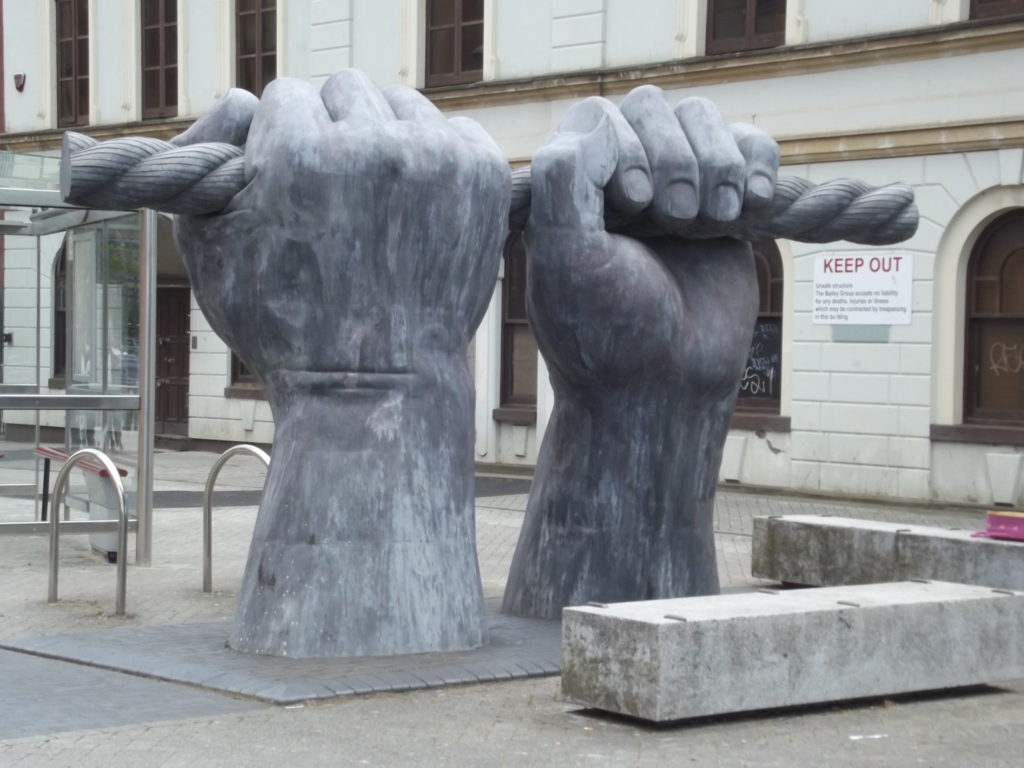
October 7, 2019; Nieman Lab
Attention is a hot commodity in the media market. That’s always been true of the industry, but like chic urban real estate, attention is harder and more expensive to get when more people want it—and every time we open an internet browser, hundreds of new outlets, advertisers, and pundits are vying for their place in the spotlight. So if you’re a small news outlet in a rural Midwestern town, how do you draw that attention to a story you know is important?
If you’re like Wisconsin Public Radio, The Gazette (Cedar Rapids, IA), Iowa Falls Times Citizen, or dozens of other nonprofit news outlets, you know that collaboration is the key. Members of the Institute for Nonprofit News (INN) have been working on a project called “Seeking a Cure: The Quest to Save Rural Hospitals,” where they come together to make their reporting on rural hospital closures more powerful.
Rural hospital closures are a significant issue, particularly in the Midwest. Fifteen percent of US hospitals have closed since 1990, including 150 rural hospitals in the last 10 years. A paper from Kritee Gujral and Anirban Basu at the National Bureau of Economic Research pointed out that most studies about hospital closures looked at the financial and economic impact of closures, but almost never on patient outcomes. Gujral and Basu did look at patient outcomes and found that rural hospital closures led to a nearly six percent increase in inpatient mortality.
Like patient outcomes, the crisis of rural healthcare closures and the stories of people affected had gone under the radar, says Christine Schmidt at Nieman Lab. Even if rural outlets covered it, they were unlikely to create enough pressure to inspire change.
Reporters and editors at rural outlets teamed up to give their projects greater visibility. They worked through INN’s Amplify News Project, which involves more than 30 news outlets and is supported by four foundations and several other partners. The projects, which include NewsMatch, amplify and provide context to local stories by encouraging collaboration, conversation, and cross-publishing. Collaboration partners got funding from the Solutions Journalism Network and INN and created a national story.
Sign up for our free newsletters
Subscribe to NPQ's newsletters to have our top stories delivered directly to your inbox.
By signing up, you agree to our privacy policy and terms of use, and to receive messages from NPQ and our partners.
Collaboration among news organizations isn’t entirely novel; as the Center for Cooperative Media points out, six newsrooms joined up to form the Associated Press in 1846, and outlets often cross-publish. But creating content together is somewhat anathema to an industry that’s historically thrived on competition. Here, as we’ve seen in other industries, nonprofits and public institutions have benefitted from their mission-driven models in the ability to lead this kind of work.
Nonprofit news collaborations recently made headlines when an investigation by ProPublica and MLK50 showed that a Memphis hospital was regularly suing impoverished patients, including their own low-wage employees. The story created public pressure, forcing the hospitals to drop the suits and pay their workers more. It also laid the groundwork for holding nonprofit hospitals to a higher standard where, in effect, their responsibilities to subsidize patient care are traded for tax exemption.
This model of campaign style collaboration on social issues that need public scrutiny and change has been emerging rapidly in nonprofit news as a strong and meaningful niche for the still-emerging field.
Collaboration among these institutions doesn’t only offer greater visibility; it changes what’s written. Jean Friedman-Rudovsky, the co-executive director of a news collaboration called Resolve Philly, said, “As collaboration continues to spread, 2019 will be a year of pursuing shared reporting structures that embrace equity over equality…which recognizes power dynamics, and allows for flexibility in collaborative processes to ensure that each partner is valued for their strength.” Jan Schaffer at the Corporation for Public Broadcasting said, “These collaborations are using data analysis and distributed reporting to unpack stories that percolate beneath the surface of communities and often personally affect news consumers.”
Which brings us back to rural hospitals. INN collaboration leaders saw that despite years of reporting, closure trends continued, so they looked at how they could bring the affected communities that local reporters knew into the public eye. Now reporting about rural hospitals has appeared in Salon, The Conversation, and NPR, among others.
Lyle Muller, the IowaWatch editor who helped start this project, said, “If the Iowa Falls newspaper writes about its hospital for two years, it’s an Iowa Falls problem that Iowa Falls has to solve. But when multiple newspapers in Iowa write about this issue, all of a sudden it starts becoming an Iowan issue that Iowans have to solve. And if news organizations in seven states write about it, now it’s a Midwest problem that the Midwest has to solve. And by the time you’re talking about a major region of the nation like that, it becomes a national problem to be solved.”
At a time when it seems every national politician has a plan to “fix” healthcare, it makes sense that hospital closures and the resultant patient outcomes would be in the national eye. But it took nonprofit reporters who were embedded in and committed to their communities to bring it out, and this is exactly why the new collaborative methods of nonprofit news can be so effective at making change. As they say, keep an eye on this space. —Erin Rubin











